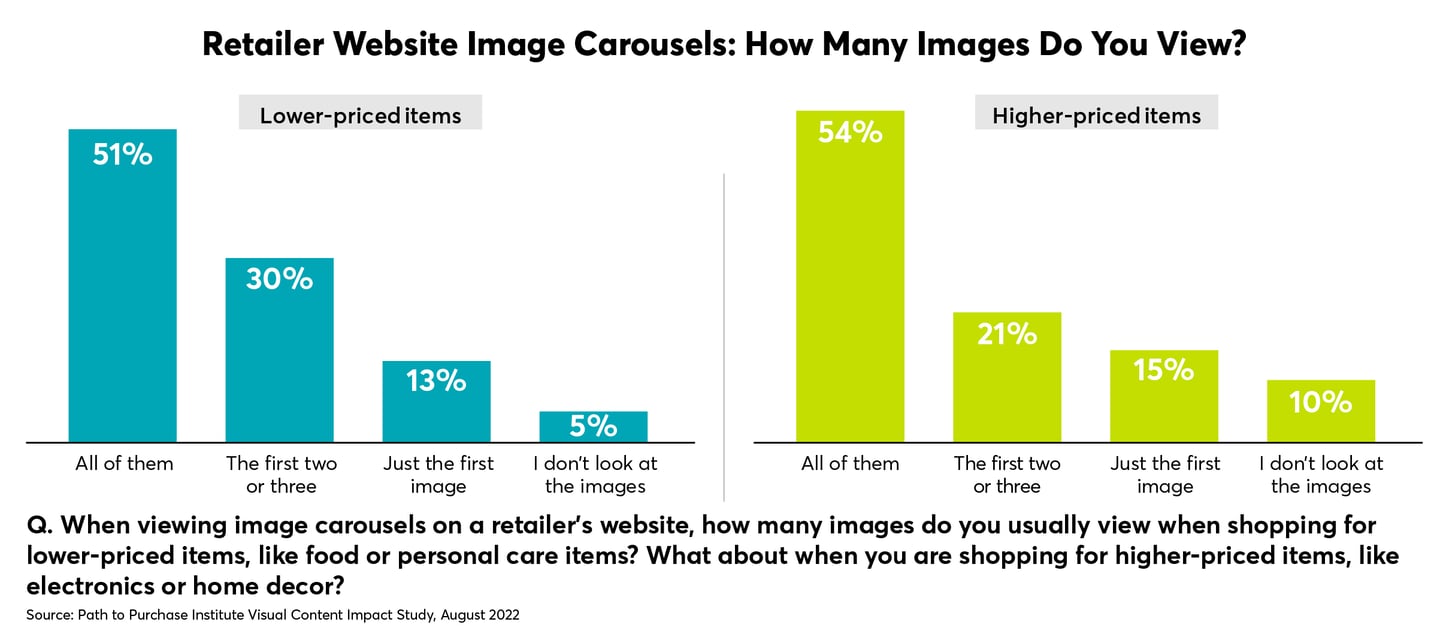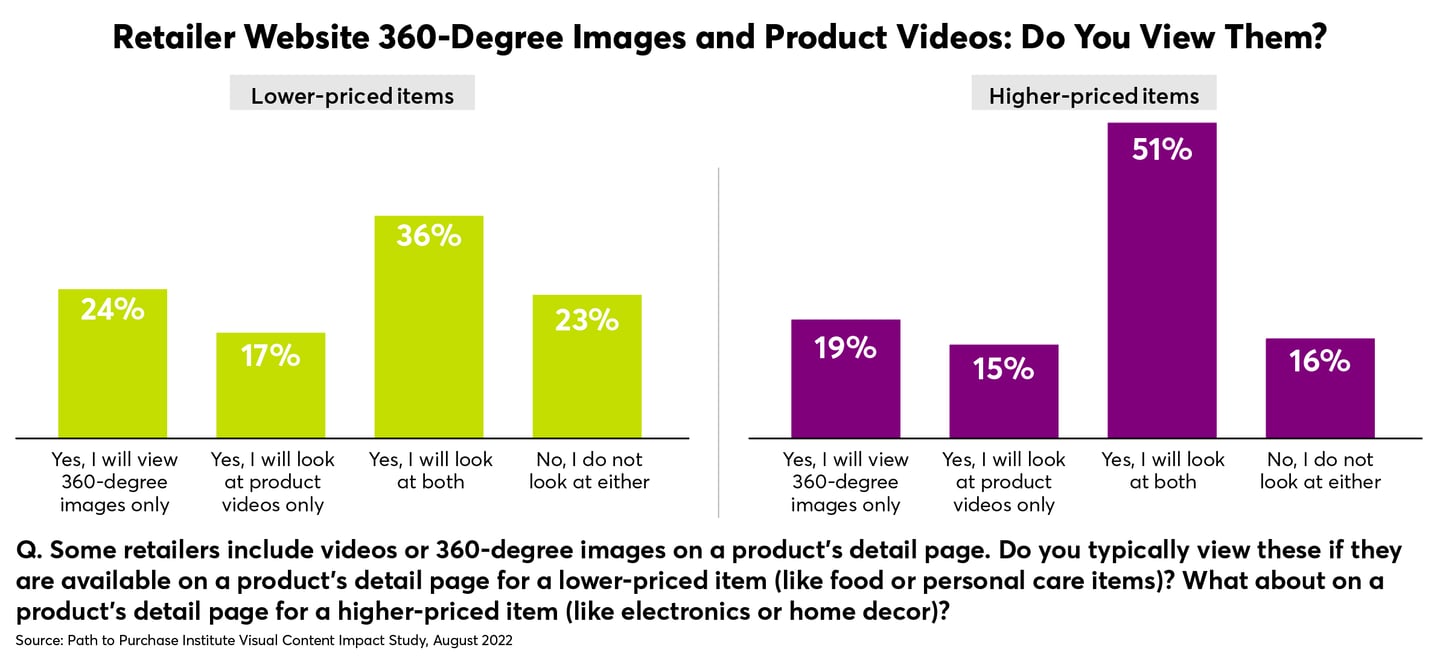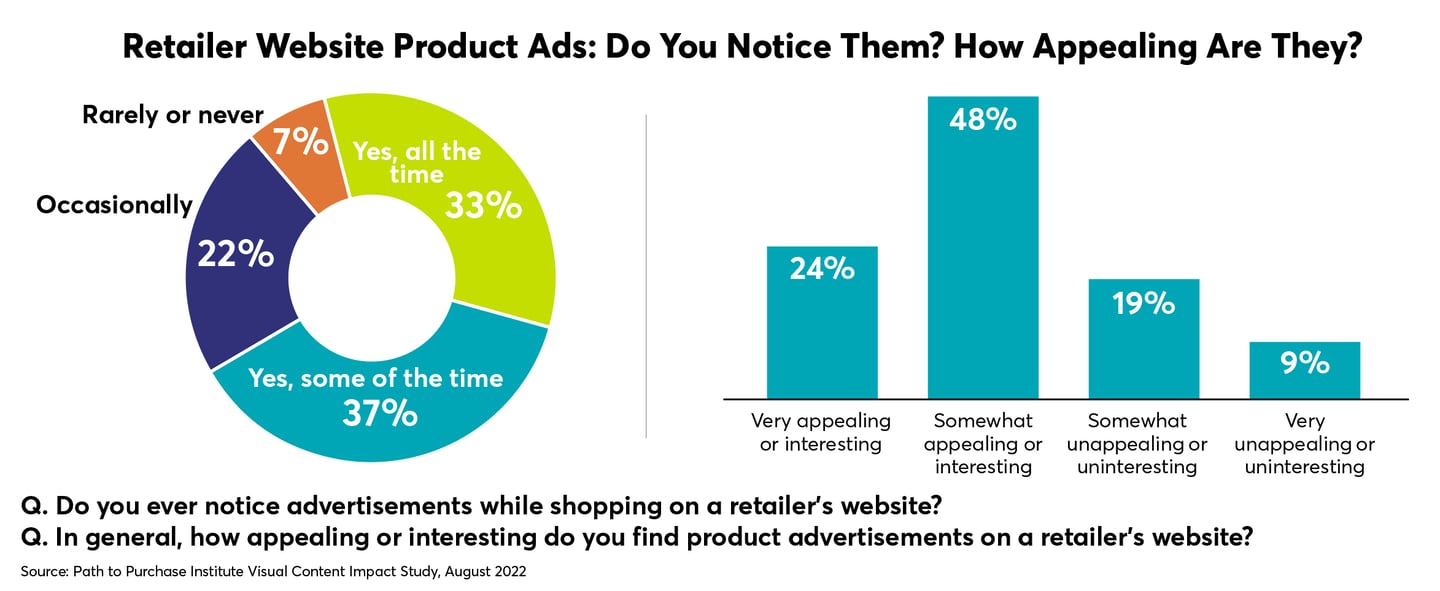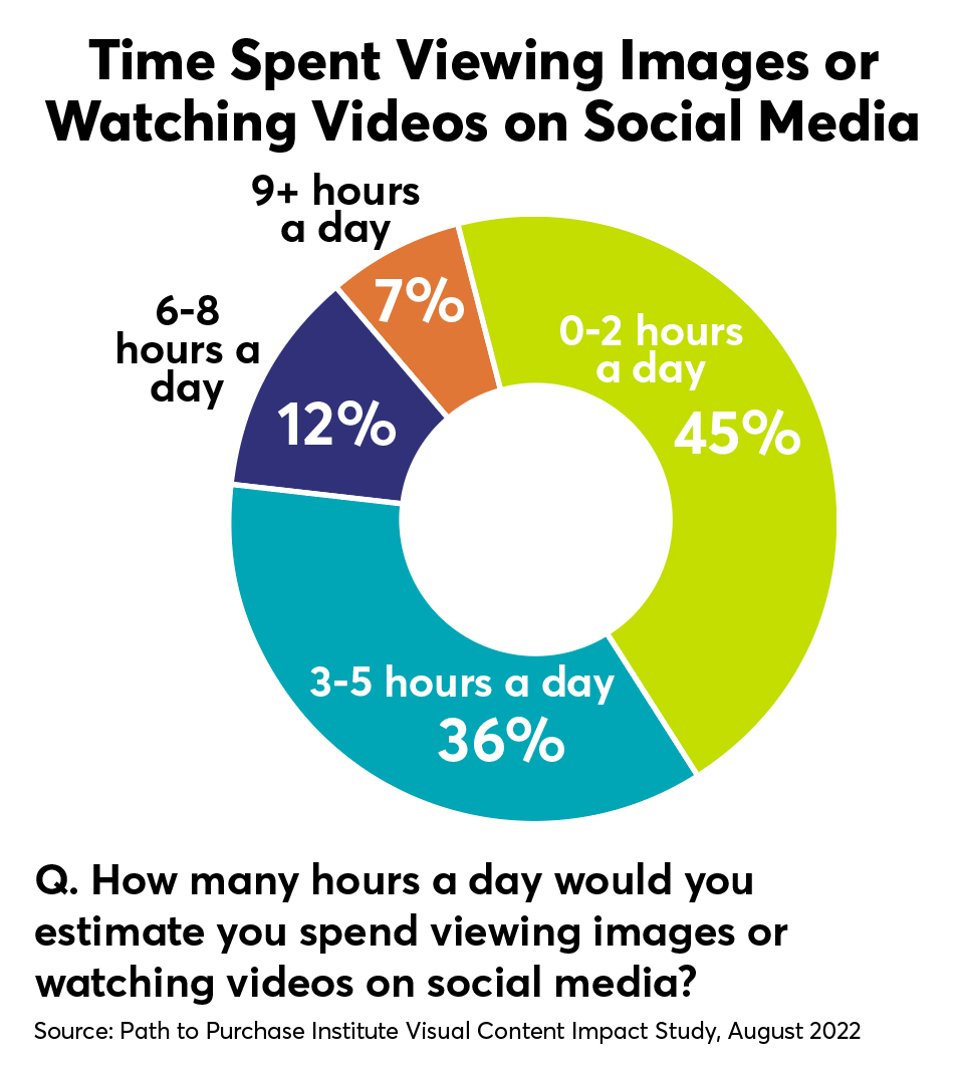Special Report: The Impact of Visual Content
A picture is worth a thousand words, or more, but words do still matter. And marketers must find the balance that connects with today’s complex audience, a multigenerational and diverse consumer base.
In the inflation-stressed consumer world, it is not surprising that eyes are drawn to price first. Furthermore, our social media-driven culture means people’s opinions also matter.
With the importance of words — i.e., price and popular opinion — clearly understood, images still have a critical ranking in the visual hierarchy. Image carousels, videos and 360-degree images have the power to tap into consumer emotions.
How can brands and retailers effectively curate all of these visual elements and leverage visual content to foster and deepen consumer relationships and ultimately convert to sales?
This special report shares insights on the impact of visual content based on the responses of 1,226 shoppers between the ages of 18-65, who self-reported shopping online at least once a month in one or more select categories. With Amazon and retailer websites topping the list for online shopping across categories, this report highlights how visual content on these shopping platforms is influencing the path to purchase and opportunities for brands and retailers to catch consumers’ eyes — and then deliver an experience they buy into.
Shopping on Amazon
When it comes to online shopping, consumers look to Amazon to support a variety of category needs. Forty-nine percent of respondents use Amazon for food/grocery items or non-alcoholic beverages, and 68% consider Amazon a primary choice for non-grocery item shopping.
As shoppers navigate Amazon search results, product images are in direct view, guiding the way, and approximately one-quarter of Amazon shoppers highlight the appealing product or packaging images as attention grabbers. Other motivators for clicking on a particular item include a low price, ratings, and “Best Seller” or “Amazon’s Choice” badges (price is prioritized by older Gen X and Baby Boomer shoppers, while ratings and badges have a greater influence on younger Gen Z consumers).
For those who say appealing images catch their attention, 67% are most often drawn to images that show relevant product features, while 58% are looking at visuals that depict the product quantity or size of packaging. Gen Z and Millennials (56%) more often note the influence of appealing stylized images compared to Gen Z and Baby Boomers (39%). And 50% of men are more likely to be interested in product packaging compared to 36% of women.
Brands committed to a deep understanding of their target audiences and investing in shopper analytics will be able to make more informed image selections or be inspired to test creative solutions for image curation.
As consumers dig deeper into a product’s detail page, visual content in the form of carousel images and product videos, as well as reviews with images and videos, are valued by shoppers.
When evaluating the types of visuals, including image carousels, videos and 360-degree images, over half of the respondents referenced viewing all three types of images whether shopping for everyday, lower-priced items or higher-priced products. If they are available, shoppers often look at both 360-degree images and product videos. This is especially true for higher-priced items, such as electronic or home decor products.
While drawn in by price and other product details, shoppers are spending time exploring all of the available images and video offerings as they weigh their buying decisions.
For lower-priced products, shoppers are looking for imagery that highlights features and benefits (50%), and many want the ability to zoom in to get a better look at the product (42%). Images are also considered important for helping shoppers evaluate the size and color of a product (39%). And similar to the validation of peer reviews, consumers are influenced by images of real-life customers using the product (36%). For Gen Z and Millennial shoppers, product packaging and stylized images of the product being used are also of particular interest.
The visual hierarchy for higher-priced products is similar to lower-priced items, but emphasized by a higher percentage of respondents. Sixty-one percent are looking at the specific features of the higher-priced items, and 50% are interested in zoom-in options. Product size and color (42%) as well as real-life customers using the product (40%) follow in ranking.
Eye-catching advertising on Amazon presents a significant opportunity for brands to reach shoppers. Three-quarters of respondents admit that they regularly notice ads while shopping on the Amazon website or app. However, only about a quarter of shoppers find the ads “very appealing or interesting.”
Ads that feature a discount or promotion grab consumer attention (41%), while 36% are drawn to an eye-catching image or video. If the ad is for a product the shopper was already searching for, then that reinforces their path to purchase (36%). Respondents were also receptive to ads that introduce them to a new or unique product (32%) or ads personalized to their browsing/shopping history (31%).
When asked about ways to improve ads on Amazon, 25% of respondents wanted to see ads that are personally relevant. This highlights the importance of marketing teams implementing visual analytics to better understand their audience. They have to stay informed and nimble to curate content that speaks directly to and emotionally connects with consumers.
Shopping on Retailers’ Websites
For those shopping on retailer websites, price is again the top priority (51%) when they are viewing search results. One-quarter of respondents identified appealing product and packaging images that are eye-catching, which is slightly higher than shoppers on Amazon. Men ranked appealing product and packaging images higher than women, 37% compared to 21%. Men are also more likely to be influenced by the number of product reviews and “Best Seller” or “Sponsored” badges.
When asked to eliminate price from the decision-making equation, shoppers looking at search results on retailers’ websites leaned in on product/brand familiarity, availability in-store and appealing product or packaging images.
Consumers said they often are looking for images that depict the product quantity or size of packaging (73%), appealing packaging (59%) or relevant product features (59%). Gen Z and Millennials more often refer to stylized images as appealing.
As shoppers continue on their path to purchase on a product’s detail page, the price will again influence the purchasing decision (52%). Respondents are also interested in product descriptions, brand familiarity and local availability.
Imagery — whether images carousels, video or 360-degree images — plays a role in conveying important product information. When commenting on the use of image carousels on retailer sites, more than half of the respondents said they look at all of the images. This includes lower-priced and higher-priced items.
Additionally, 360-degree images and product videos are enticing to shoppers. When shopping for lower-priced items, 36% of respondents will look at both, and the percentage increases to 51% when considering higher-priced items.
Consumers who are shopping for lower-priced items are looking for images that highlight specific product features (49%). From nutritional labels (42%) and zoomed-in options (38%) to size and color (38%), shoppers are digging into the details. Gen Z and Millennials are more interested in seeing images depicting the product used. This includes real-life customers as well as stylized images.
When it comes to shopping for higher-value items, images that showcase specific features are even more important, as prioritized by 65% of respondents. Zoomed-in images (49%) and real-life customers using the product (41%) were also emphasized. The real-life and stylized imagery again ranks higher with younger Gen Z and Millennial shoppers.
Similar to those shopping on Amazon, these responses demonstrate that images and videos play a key role in communicating important product information, as well as deepening the emotional connection between shoppers and the brands and products being considered.
Likewise, respondents’ reactions to advertising on retailer websites were similar to ads on Amazon, presenting an opportunity to gain greater shopper attention. Shoppers admit to noticing product ads, but only a quarter of them find the ads “very appealing or interesting.”
There are a variety of reasons consumers click on an ad to learn more about a product, with a discount or promotional offer ranking highest for 44% of the people surveyed. Eye-catching images or videos (35%), brand familiarity (35%), a product already being searched for (34%) as well as an introduction to a new or unique product (31%) also work to grab the attention needed to convert to a click.
For retailers looking for ways to enhance the appeal of their advertising, there is plenty of room for improvement. Only 3% of respondents said retailers’ ads are good as-is. From featuring discounts and promotions (according to 17%) to making ads more engaging (16%) and relevant (13%) to offering better images and videos (11%), retailers have opportunities for creativity and experimentation.
Shopping Online and Social Media Habits
Consumer attention is in high demand. From social media to online shopping, people are bombarded with visual stimulation. So what is drawing and capturing their attention? For perspective, consider that respondents estimate spending up to five hours a day consuming videos or images across social media platforms. The amount of time spent increases significantly among younger generations. These Gen Z and Millennial consumers are most active on YouTube, Instagram, TikTok, Snapchat and Pinterest. Across all generations of shoppers, YouTube (80%), Facebook (79%), Instagram (59%) and TikTok (54%) are the social platforms used most, with more than half saying they use the platforms at least 2-4 times per week.
This social media activity and focus on visual content influences overall online shopping behavior, and can inform brand and retailer visual content curation. When faced with the decision of where to purchase a product that is available in multiple places online, shoppers are looking for the site that offers the most detailed information. This includes product descriptions (47%), star ratings (39%) and reviews (39%).
High-quality images on product detail and search results pages — as well as videos or 360-degree images and the number of images available — are also important. Whether shopping for lower- or higher-priced items, images depicting product features and the available sizes and colors are considered the most important, but a variety of imagery and video content is influential.
How brands and retailers carefully curate all of this information can capture shopper attention and provide them with the decision-making details they need to complete a purchase. The more brands and retailers know about their target audience, the better choices they can make regarding videos, stylized content and access to images of real-life customers using the product.
Products marketed to a broad consumer base have to deliver the important details in multiple ways, while those with a very targeted demographic — such as Gen Z and Millennials — can leverage the visual content these shoppers prioritize. Consumer preference data is more important than ever to guide e-commerce strategy, so marketers can curate product information in an engaging yet efficient way.














